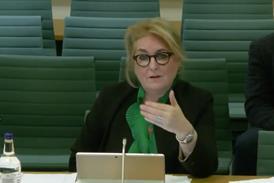What trends have begun to emerge since the raft of reforms in April?
Speaking to litigators recently, I learned that a few trends seem to be emerging so far as a result of the Jackson reforms.
Anecdotally, several lawyers have told me that they have seen a ‘spike’ in settlements recently – most likely due to costs budgeting. As one might expect, seeing the figures laid bare for estimated own and adverse costs is causing some litigants to think very hard about whether they really have the appetite to take their case all the way to court. At recent costs events, judges and costs lawyers have also reported cases settling shortly after clients have clapped eyes on the budgets.
If budgeting is indeed prompting settlements, the government and judiciary would no doubt regard that as a good thing; although if you are running a business based on litigation, you might not be quite so sanguine about it.
Another issue relates to after-the-event insurance. It was always obvious that stripping away recoverability of ATE premiums was going to make it hard to get insurance in smaller scale litigation, and that is now proving to be the case. Litigators report that they just can’t get insurance at an affordable level for many multi-track cases; making it difficult for many small businesses to enforce their contractual rights.
But the ATE market is aware of the issue, and is trying to find ways of bringing the premium down to a level that works in lower-value litigation.
At a joint Litigation Funding magazine/Law Society event last month, QBE’s Rocco Pirozzolo talked about how lawyers and insurers need to work together to find a solution that works for the client. He said that while deferred premium models still exist, the danger is that the premium remains on the high side – squeezing out a raft of commercial disputes. Pirozzolo suggested that a deposit premium may be the answer (if the client has the money), bringing down the deferred element and reducing the cost.
Clients can pay in instalments along the way, as indeed they will already be doing under a discounted conditional fee agreement.
At a LexisNexis event at the end of last month, Richard Myrtle from broker Universal Legal Protection outlined some other possibilities being offered by insurers, as the ATE offering moves more into line with other areas of insurance. So, clients might be able to pay an ‘excess’ to reduce their premium, rather than taking cover from the ‘ground up’, as has traditionally been the case with ATE. A client may be able to afford to take a certain hit on the litigation, but after that point, they may need the protection of ATE.
Even bigger savings can be made if the client agrees to be uninsured for a certain percentage of the adverse costs, rather than a set amount.
Myrtle said one insurer had told him that they were able to offer premiums at a rate that was 50% lower than usual if the premium is paid up-front, and is non-refundable.
But if the ATE market is indeed adapting, that message has not necessarily got through yet to litigators, with one lawyer telling me recently that he had been unable to find ATE cover for a commercial client with a £1m claim. Clearly finding affordable ATE is no longer the straightforward task that it once was, and litigators will need to work a lot harder to seek it out. But if they don’t, many of their clients will be unable to bring their claim at all.
- More detailed coverage of the two costs events mentioned above will appear in the December edition of Litigation Funding magazine.
Rachel Rothwell is a former Gazette news editor

























2 Readers' comments